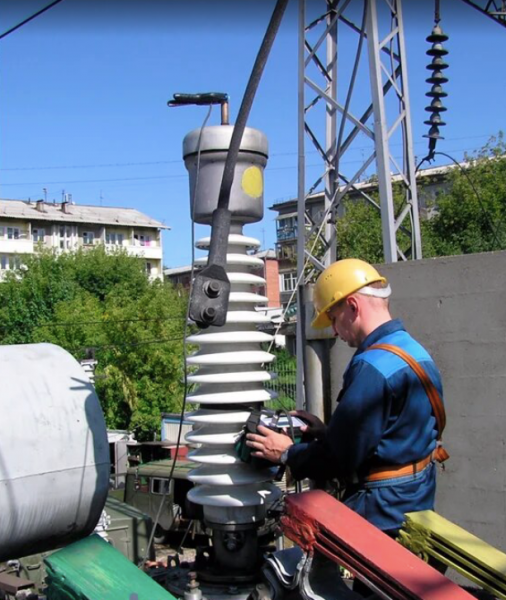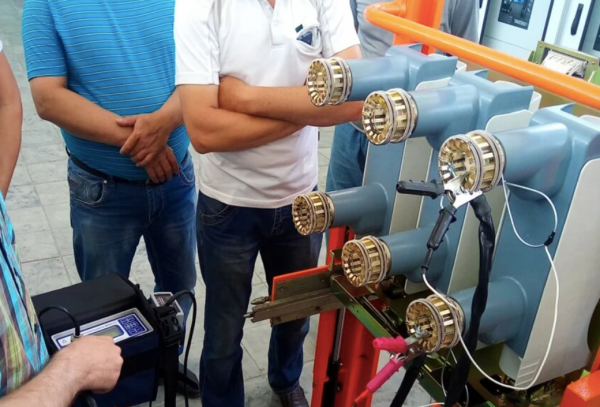Application of MIKO-2.3 instrument for measuring the resistance in various circuits of electrical equipment
When operating and repairing electrical equipment, it is necessary to measure the resistance of electrical circuits:
- contact resistances of switching devices and contact connections of current leads;
- bolted and brazed joints;
- contacts of automatic circuit breakers;
- resistances of windings of transformers, electromagnets, electric motors;
- resistances of shunt resistors in high voltage circuit breakers etc.
For microohmmeters, the main requirements are to ensure a sufficiently large current through the contact resistance and its stability. The most reliable measurements will be made when the current of the microohmmeter approaches the working current of the contacts.
Most high-voltage circuit breakers have built-in current transformers in their design. This imposes another important requirement on the microohmmeter. Not every resistance measuring device is suitable for measuring the contact resistance in a circuit where there is a current transformer. After all, the test current of the microohmmeter must flow through the circuit stably and for a sufficient time, and the microohmmeter itself must work steadily under powerful electromagnetic fields.
For milliohmmeters, in cases of measuring resistance of circuits with a large inductance, the basic requirements are to ensure fixation of current in the winding, limiting the self-induction EMF, at that the time for fixation of current in the winding must be as short as possible to reduce the duration of equipment testing.
To measure the resistances of shunt resistors of high-voltage circuit breakers, special kiloohmmeters must be used that are capable of operating under high (~1.5 kV) induced voltage.
To perform measurements on high-power circuit breakers and transformers, you need to ascend to them using a ladder or a lift. To reduce the number of ascents and descents and make measurements in a single ascent, it is desirable to have a light-weight instrument, as well as cables that are convenient to connect and have sufficient length. To keep your hands free for safety reasons when ascending to a circuit breaker, it is desirable to have an instrument that can be hung on your shoulder. This convenience, in turn, imposes another requirement on the instrument — power autonomy, i.e. a mains-powered instrument can no longer be used.
As you can see, to measure all types of resistances of electrical circuits, you will need several different highly specialized instruments, which is not always convenient. Having all these functions in one device is the most preferable option, especially since the cost of a set of instruments with the same characteristics will be higher than the cost of a single universal instrument.
SKB EP was seriously puzzled by this issue and released the versatile MIKO-2.3 back in 2008. This is a fully automatic instrument with self-adjustment to the measured object. Each of the four modes (microohmmeter, milliohmmeter, kiloohmmeter, and thermometer) is activated automatically when the corresponding test cable from the instrument set is connected.
Connecting MIKO-2.3 to the high-voltage transformer (left) and to the high-voltage circuit breaker (right)
The low weight and autonomous power supply make it possible to use MIKO-2.3 not from the ground, but from the cover of the circuit breaker or transformer (Fig. 1), or in the cradle of the lift. Therefore, the length and weight of cables in MIKO-2.3 is significantly less, and you need to ascent and descend to and from the equipment only once, not twice, as when measuring using an instrument installed on the ground.
MIKO-2.3 input cables are equipped with "crocodile" type clips with built-in clamp. This design provides easy and error-free connection to the object, eliminating errors in measurement of small resistances and reliable contact even with oxidized surfaces.
MIKO-2.3 is easy to operate and maintain, reliable and resistant to electromagnetic fields.

 Русский
Русский
 Français
Français
 Chinese
Chinese

